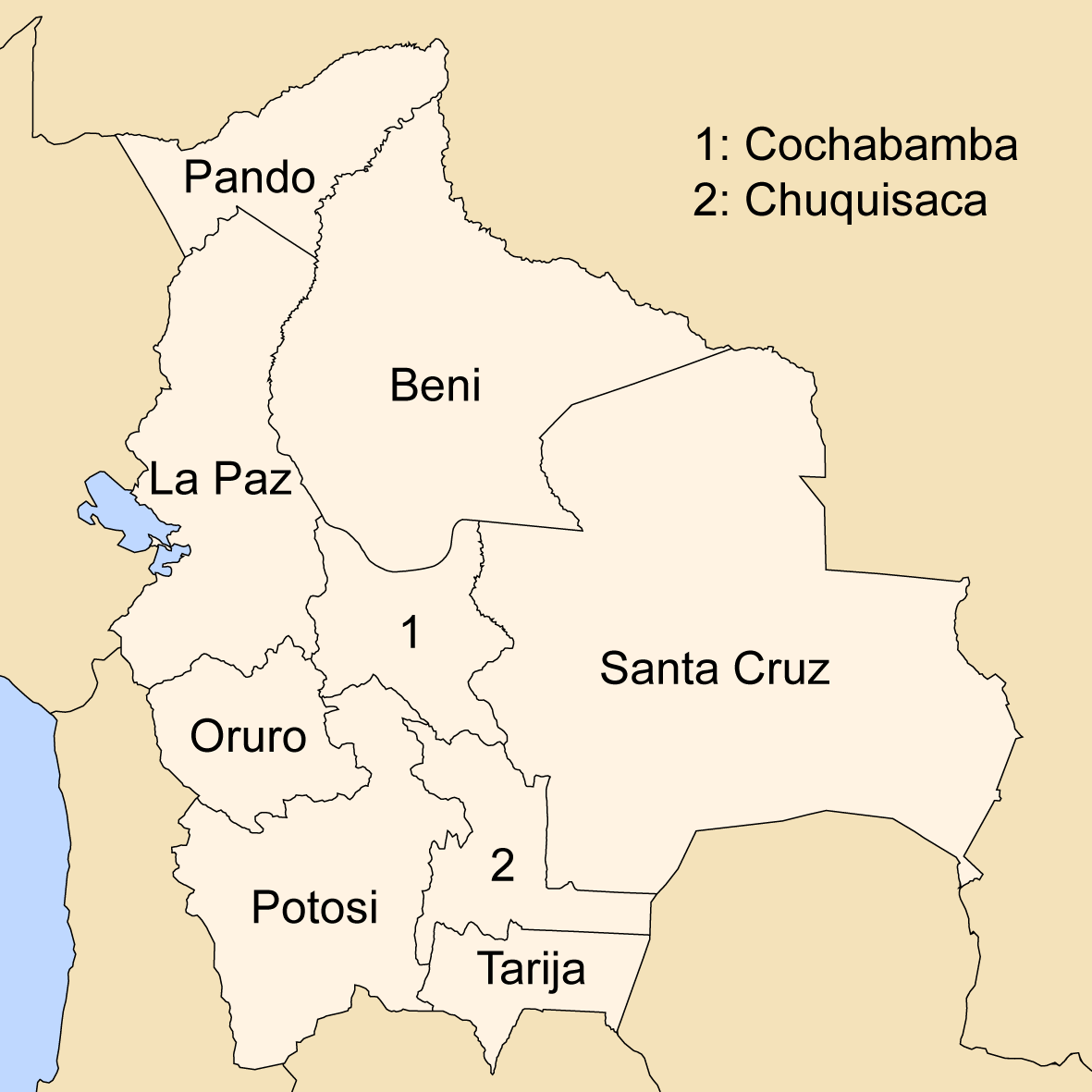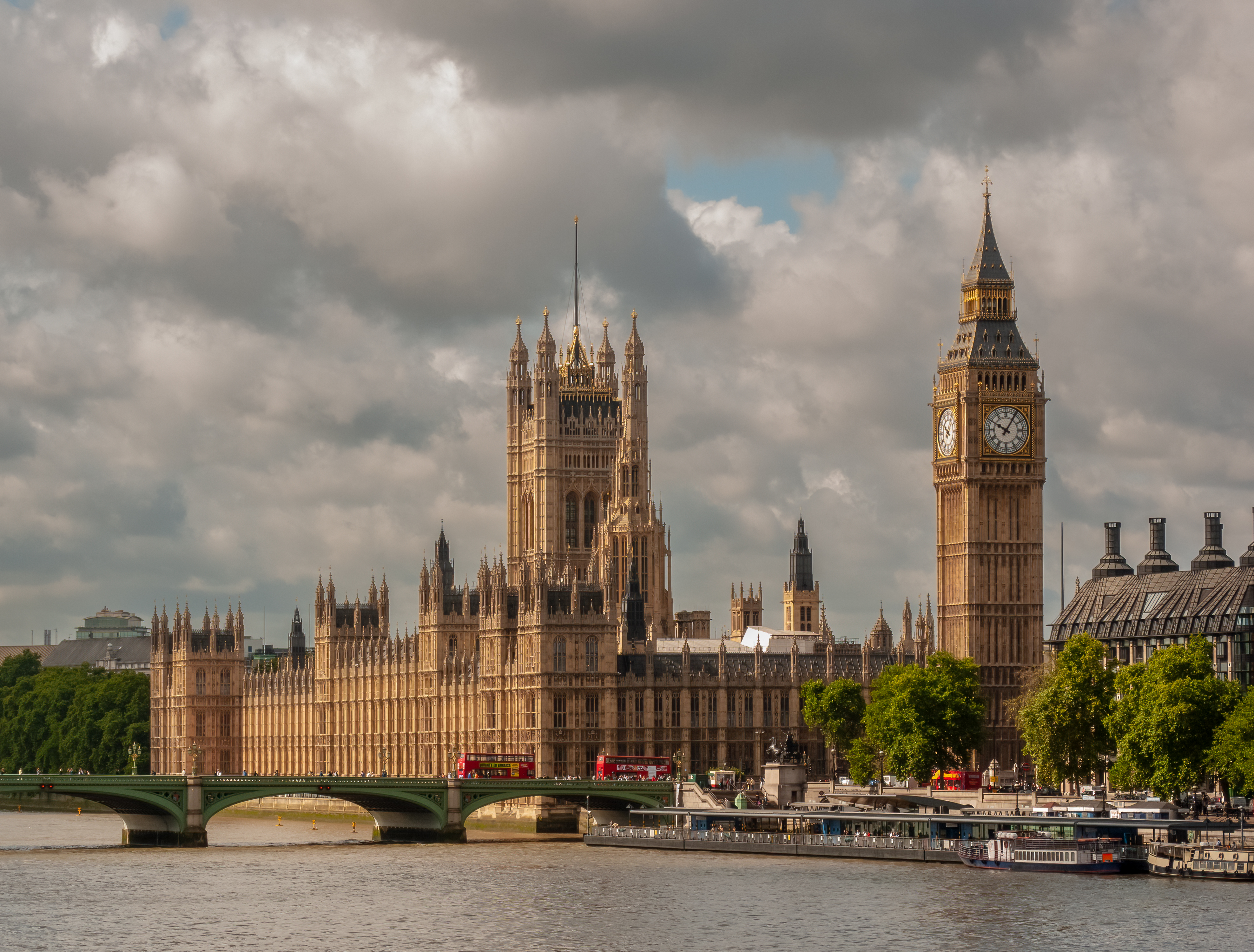|
Bolivian Congress
The Plurinational Legislative Assembly () is the national legislature of Bolivia, placed in La Paz, the country's seat of government. The assembly is bicameral, consisting of a lower house (the Chamber of Deputies or ) and an upper house (the Chamber of Senators, or ''Cámara de Senadores)''. The Vice President of Bolivia also serves as the ''ex officio'' President of the Plurinational Legislative Assembly. Each house elects its own directorate: a President, first and second Vice Presidents, and three or four Secretaries (for the Senate and the Chamber of Deputies, respectively). Each party is said to have a seat () consisting of its legislators. The representatives of each department comprise a brigade (''brigada''). Each house considers legislation in standing committees. The Chamber of Senators has 36 seats. Each of the country's nine departments returns four senators elected by proportional representation (using the D'Hondt method). (From 1985 to 2009, the Senate had 27 se ... [...More Info...] [...Related Items...] OR: [Wikipedia] [Google] [Baidu] |
Chamber Of Senators (Bolivia)
The Chamber of Senators () is the upper house of the Plurinational Legislative Assembly of Bolivia. The composition and powers of the Senate are established in the Political Constitution of the State and others determined by Bolivian laws. The Senate is the legislative body of the country, where each Senator represents the interests of their Departments. The session room is located in the Legislative Palace building in Plaza Murillo. The Senate has 36 seats. Each of the country's nine departments returns four senators elected by proportional representation (using the D'Hondt method The D'Hondt method, also called the Jefferson method or the greatest divisors method, is an apportionment method for allocating seats in parliaments among federal states, or in proportional representation among political parties. It belongs to ...). (From 1985 to 2009, the Senate had 27 seats: three seats per department: two from the party or formula that receives the most votes, with the th ... [...More Info...] [...Related Items...] OR: [Wikipedia] [Google] [Baidu] |
Mixed System
A mixed electoral system is one that uses different electoral systems to elect different seats in a legislature. Most often, this involves a First Past the Post combined with a proportional component. The results of the combination may be mixed-member proportional (MMP), where the overall results of the elections are proportional, or mixed-member majoritarian, in which case the overall results are semi-proportional, retaining disproportionalities from the majoritarian component. Systems that use multiple types of combinations are sometimes called supermixed. Mixed-member systems also often combine local representation (most often single-member constituencies) with regional or national ( multi-member constituencies) representation, having multiple tiers. This also means voters often elect different types of representatives who might have different types of constituencies. Some representatives may be elected by personal elections where voters vote for candidates, and some by list ... [...More Info...] [...Related Items...] OR: [Wikipedia] [Google] [Baidu] |
Proportional Representation
Proportional representation (PR) refers to any electoral system under which subgroups of an electorate are reflected proportionately in the elected body. The concept applies mainly to political divisions (Political party, political parties) among voters. The aim of such systems is that all votes cast contribute to the result so that each representative in an assembly is mandated by a roughly equal number of voters, and therefore all votes have equal weight. Under other election systems, a bare Plurality (voting), plurality or a scant majority in a district are all that are used to elect a member or group of members. PR systems provide balanced representation to different factions, usually defined by parties, reflecting how votes were cast. Where only a choice of parties is allowed, the seats are allocated to parties in proportion to the vote tally or ''vote share'' each party receives. Exact proportionality is never achieved under PR systems, except by chance. The use of elector ... [...More Info...] [...Related Items...] OR: [Wikipedia] [Google] [Baidu] |
Senate Of Bolivia
The Chamber of Senators () is the upper house of the Plurinational Legislative Assembly of Bolivia. The composition and powers of the Senate are established in the Political Constitution of the State and others determined by Bolivian laws. The Senate is the legislative body of the country, where each Senator represents the interests of their Departments. The session room is located in the Legislative Palace building in Plaza Murillo. The Senate has 36 seats. Each of the country's nine departments returns four senators elected by proportional representation (using the D'Hondt method The D'Hondt method, also called the Jefferson method or the greatest divisors method, is an apportionment method for allocating seats in parliaments among federal states, or in proportional representation among political parties. It belongs to ...). (From 1985 to 2009, the Senate had 27 seats: three seats per department: two from the party or formula that receives the most votes, with the thi ... [...More Info...] [...Related Items...] OR: [Wikipedia] [Google] [Baidu] |
Committee
A committee or commission is a body of one or more persons subordinate to a deliberative assembly or other form of organization. A committee may not itself be considered to be a form of assembly or a decision-making body. Usually, an assembly or organization sends matters to a committee as a way to explore them more fully than would be possible if the whole assembly or organization were considering them. Committees may have different functions and their types of work differ depending on the type of organization and its needs. A member of a legislature may be delegated a committee assignment, which gives them the right to serve on a certain committee. Purpose A deliberative assembly or other organization may form a committee (or "commission") consisting of one or more persons to assist with the work of the assembly. For larger organizations, much work is done in committees. They can be a way to formally draw together people of relevant expertise from different parts of an organi ... [...More Info...] [...Related Items...] OR: [Wikipedia] [Google] [Baidu] |
Departments Of Bolivia
Bolivia is a unitary state consisting of nine department (administrative division), departments (). Departments are the primary subdivisions of Bolivia, and possess certain rights under the Constitution of Bolivia. Each department is represented in the Plurinational Legislative Assembly—a bicameralism, bicameral legislature consisting of the Senate and the Chamber of Deputies. Each department is represented by four Senators, while Deputies are awarded to each department in proportion to their total population. Out of the nine departments, La Paz Department (Bolivia), La Paz was originally the most populous, with 2,706,351 inhabitants as of 2012 but the far eastern department of Santa Cruz Department (Bolivia), Santa Cruz has since surpassed it by 2020; Santa Cruz also claims the title as the largest, encompassing . Pando Department, Pando is the least populated, with a population of 110,436. The smallest in area is Tarija Department, Tarija, encompassing . Departments Forme ... [...More Info...] [...Related Items...] OR: [Wikipedia] [Google] [Baidu] |
Legislature
A legislature (, ) is a deliberative assembly with the legal authority to make laws for a political entity such as a country, nation or city on behalf of the people therein. They are often contrasted with the executive and judicial powers of government. Legislatures can exist at different levels of government–national, state/provincial/regional, local, even supranational (such as the European Parliament). Countries differ as to what extent they grant deliberative assemblies at the subnational law-making power, as opposed to purely administrative responsibilities. Laws enacted by legislatures are usually known as primary legislation. In addition, legislatures may observe and steer governing actions, with authority to amend the budget involved. The members of a legislature are called legislators. In a democracy, legislators are most commonly popularly elected, although indirect election and appointment by the executive are also used, particularly for bicameral legis ... [...More Info...] [...Related Items...] OR: [Wikipedia] [Google] [Baidu] |
Upper House
An upper house is one of two Legislative chamber, chambers of a bicameralism, bicameral legislature, the other chamber being the lower house. The house formally designated as the upper house is usually smaller and often has more restricted power than the lower house. A legislature composed of only one house (and which therefore has neither an upper house nor a lower house) is described as unicameralism, unicameral. History While the Roman Senate, senate of the ancient roman kingdom 755 BC was the first assembly of aristocrats counseling the king, the first upper house of a bicameral legislature was the medieval House of Lords consisting of the archbishops, bishops, abbots and nobility, which emerged during the reign of King Edward III around 1341 when the Parliament clearly separated into two distinct Debating chamber, chambers, the House of Commons of England, House of Commons, consisting of the shire and borough representatives, and the House of Lords. 1808 Spain adopted ... [...More Info...] [...Related Items...] OR: [Wikipedia] [Google] [Baidu] |
Lower House
A lower house is the lower chamber of a bicameral legislature, where the other chamber is the upper house. Although styled as "below" the upper house, in many legislatures worldwide, the lower house has come to wield more power or otherwise exert significant political influence. Common attributes In comparison with the upper house, lower houses frequently display certain characteristics (though they vary by jurisdiction). Powers In a parliamentary system, the lower house: * In the modern era, has much more power, usually due to restrictions on the upper house. ** Exceptions to this are Australia, Italy, and Romania, where the upper and lower houses have similar power. * Is able to override the upper house in some ways. * Can vote a motion of no confidence against the government, as well as vote for or against any proposed candidate for head of government at the beginning of the parliamentary term. In a presidential system, the lower house: * Generally has less power th ... [...More Info...] [...Related Items...] OR: [Wikipedia] [Google] [Baidu] |
Bicameralism
Bicameralism is a type of legislature that is divided into two separate Deliberative assembly, assemblies, chambers, or houses, known as a bicameral legislature. Bicameralism is distinguished from unicameralism, in which all members deliberate and vote as a single group. , roughly 40% of the world's national legislatures are bicameral, while unicameralism represents 60% nationally and much more at the subnational level. Often, the members of the two chambers are elected or selected by different methods, which vary from Jurisdiction (area), jurisdiction to jurisdiction. This can often lead to the two chambers having very different compositions of members. Enactment of a bill, Enactment of primary legislation often requires a concurrent majority—the approval of a majority of members in each of the chambers of the legislature. When this is the case, the legislature may be called an example of perfect bicameralism. However, in many parliamentary and semi-presidential systems, th ... [...More Info...] [...Related Items...] OR: [Wikipedia] [Google] [Baidu] |
Legislature
A legislature (, ) is a deliberative assembly with the legal authority to make laws for a political entity such as a country, nation or city on behalf of the people therein. They are often contrasted with the executive and judicial powers of government. Legislatures can exist at different levels of government–national, state/provincial/regional, local, even supranational (such as the European Parliament). Countries differ as to what extent they grant deliberative assemblies at the subnational law-making power, as opposed to purely administrative responsibilities. Laws enacted by legislatures are usually known as primary legislation. In addition, legislatures may observe and steer governing actions, with authority to amend the budget involved. The members of a legislature are called legislators. In a democracy, legislators are most commonly popularly elected, although indirect election and appointment by the executive are also used, particularly for bicameral legis ... [...More Info...] [...Related Items...] OR: [Wikipedia] [Google] [Baidu] |
Bolivia
Bolivia, officially the Plurinational State of Bolivia, is a landlocked country located in central South America. The country features diverse geography, including vast Amazonian plains, tropical lowlands, mountains, the Gran Chaco Province, warm valleys, high-altitude Andean plateaus, and snow-capped peaks, encompassing a wide range of climates and biomes across its regions and cities. It includes part of the Pantanal, the largest tropical wetland in the world, along its eastern border. It is bordered by Brazil to the Bolivia-Brazil border, north and east, Paraguay to the southeast, Argentina to the Argentina-Bolivia border, south, Chile to the Bolivia–Chile border, southwest, and Peru to the west. The seat of government is La Paz, which contains the executive, legislative, and electoral branches of government, while the constitutional capital is Sucre, the seat of the judiciary. The largest city and principal industrial center is Santa Cruz de la Sierra, located on the Geog ... [...More Info...] [...Related Items...] OR: [Wikipedia] [Google] [Baidu] |




